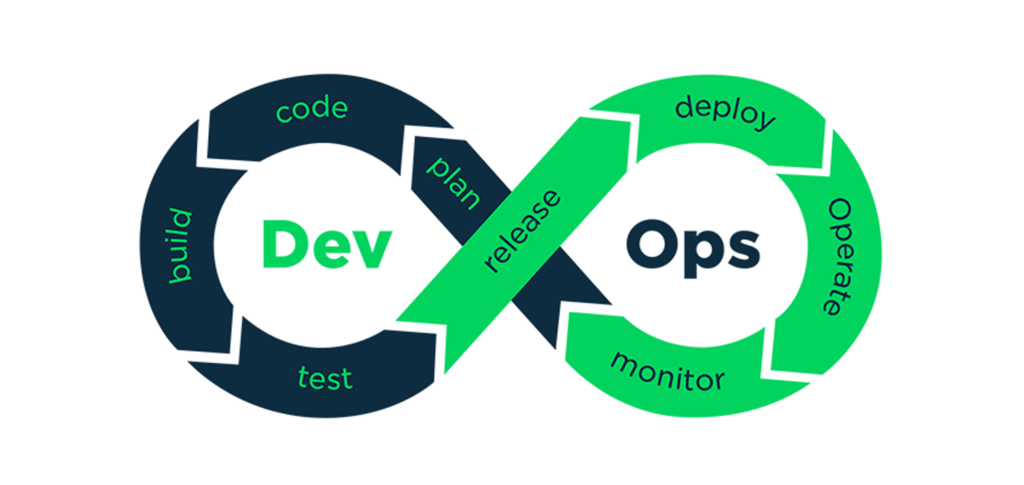
DevOps
Organizations are all pushing the boundaries of DevOps, breaking down barriers between development and operations, transforming their companies and their industries—and continuing to do so during a time of global upheaval.
DevOps is the combination of cultural philosophies, practices, and tools that increases an organization’s ability to deliver applications and services at high velocity: evolving and improving products at a faster pace than organizations using traditional software development and infrastructure management processes. This speed enables organizations to better serve their customers and compete more effectively in the market.
Under a DevOps model, development and operations teams are no longer “siloed.” Sometimes, these two teams are merged into a single team where the engineers work across the entire application lifecycle, from development and test to deployment to operations, and develop a range of skills not limited to a single function.
In some DevOps models, quality assurance and security teams may also become more tightly integrated with development and operations and throughout the application lifecycle. When security is the focus of everyone on a DevOps team, this is sometimes referred to as DevSecOps.
These teams use practices to automate processes that historically have been manual and slow. They use a technology stack and tooling which help them operate and evolve applications quickly and reliably. These tools also help engineers independently accomplish tasks (for example, deploying code or provisioning infrastructure) that normally would have required help from other teams, and this further increases a team’s velocity.
Benefits of DevOps
Speed
Move at high velocity so you can innovate for customers faster, adapt to changing markets better, and grow more efficient at driving business results. The DevOps model enables your developers and operations teams to achieve these results. For example, microservices and continuous delivery let teams take ownership of services and then release updates to them quicker.
Rapid Delivery
Increase the frequency and pace of releases so you can innovate and improve your product faster. The quicker you can release new features and fix bugs, the faster you can respond to your customers’ needs and build competitive advantage. Continuous integration and continuous delivery are practices that automate the software release process, from build to deploy.
Reliability
Ensure the quality of application updates and infrastructure changes so you can reliably deliver at a more rapid pace while maintaining a positive experience for end users. Use practices like continuous integration and continuous delivery to test that each change is functional and safe. Monitoring and logging practices help you stay informed of performance in real-time.
Scale
Operate and manage your infrastructure and development processes at scale. Automation and consistency help you manage complex or changing systems efficiently and with reduced risk. For example, infrastructure as code helps you manage your development, testing, and production environments in a repeatable and more efficient manner.
Improved Collaboration
Build more effective teams under a DevOps cultural model, which emphasizes values such as ownership and accountability. Developers and operations teams collaborate closely, share many responsibilities, and combine their workflows. This reduces inefficiencies and saves time (e.g. reduced handover periods between developers and operations, writing code that takes into account the environment in which it is run).
Security
Move quickly while retaining control and preserving compliance. You can adopt a DevOps model without sacrificing security by using automated compliance policies, fine-grained controls, and configuration management techniques. For example, using infrastructure as code and policy as code, you can define and then track compliance at scale.
Software and the Internet have transformed the world and its industries, from shopping to entertainment to banking. Software no longer merely supports a business; rather it becomes an integral component of every part of a business. Companies interact with their customers through software delivered as online services or applications and on all sorts of devices. They also use software to increase operational efficiencies by transforming every part of the value chain, such as logistics, communications, and operations. In a similar way that physical goods companies transformed how they design, build, and deliver products using industrial automation throughout the 20th century, companies in today’s world must transform how they build and deliver software.
WhizIT leverages the core principles of Dev Ops Development such as collaboration, automation, monitoring, and feedback to remove inefficiencies across the software delivery lifecycle so that enterprises can improve product quality and customer experience. We also help enterprises adopting the cloud right way using DevOps principles.